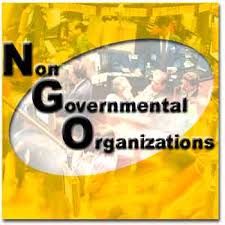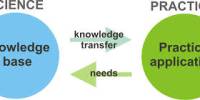Introduction:
In Bangladesh NGOs have appeared as the savior of countless number of people without food, cloth, education and basic health facilities. Bangladesh is one of the top thirteen underprivileged countries. With the record of being the most densely populated country on earth and feeble manpower competency, Bangladesh is facing massive challenge to meet up the demand of her ever-increasing population. Although agriculture sector is the main source of income for this rural-agro based country, unfortunately this sector has completely failed to create rewarding employment opportunity for the landless. Considering these overall situations, the NGOs are working on poverty eradication by directly involving the poverty stricken population. Their target groups are basically the poor and vulnerable ones with hardly any possessions. Their main tasks are to organize these people, create awareness in them and make them development oriented. These organizations are working based on the assessed need and demand of the grass root level farmers and women. By involving the beneficiaries directly, they are working within the context of overall national planning for development.
NGO: BACKGROUND, DEFINITION AND MISSIONS
The history of philanthropic activities is as antiquated as the history of mankind. From the day men started living together in society, since then they have begun to help each other in time of need. In ancient time, people used to live in small clans and whenever any one of them fell into trouble, and then the strong and sympathetic kinsmen would come out to help the poor and the feeble. The substituted prevalent version of these separate and unorganized activities is today’s NGOs. The chronic increase of population, evolution of new socio-economic as well as psychological problems, limitations of the state fund in social welfare etc. made it almost impossible for any long-term solution of all these problems by the government alone. Hence the emergence of NGOs was considered with much importance in this regard.
Defining NGO
In Bangladesh the term NGO is very well known and NGO activities are wide spread. Literally NGO is Non-Governmental aid providing organization. According to social science dictionary, “ Non Government Organization is a non-profit agency that serves some public interest. Non Government Organization is established to fulfill some social purposes other than monetary rewards to financial backers. In other words it is stated “NGO’s are usually defined as an association of persons organized on voluntary basis through the initiative of one or more dedicated persons committed to the planning and implementation of development projects at the grass root level. NGO’s although work outside the government structure but they are within the legal framework of the country” .
The book “Social Welfare Legislation in Bangladesh” said, “A broader definition of NGO refers to associations voluntarily formed by individuals for the purpose of rendering welfare and development services outside Government structures; drawing funds from national or international sources; and functioning within the legal frame work of the country.” From the above discussion it is clearly evident that NGOs are those organizations, which are one way or the other involved in development or welfare oriented activities.
Missions and Goals of NGOs
Non Governmental Organizations (NGOs) are launched with various purposes. Based on the region or local demand and problems, divergence in each NGO targets and objectives can be observed. But everywhere the main purpose of NGOs is the much-desired development of poverty stricken deprived people. The missions and goals with which the NGOs are established and conducting their operations in Bangladesh are:
- Assisting the poor and suffering people as well as exercising self-control through utilization of own resources.
- Identifying native assets, local leadership and ensuring effective utilization of these for welfare and development.
- Coordinating the poor and deprived ones through formation of co-operatives and thus facilitate the socio-economic progress.
- Health and Nutrition development.
- Acting as the associate of the government and no as competitor.
- Generating alternatives to overcome special social problems and hurdles besides taking necessary steps to aware the general population.
- Creating positive attitude of the society, annihilation of superstition and belief against development and bringing in the deprived ones in the main stream of development.
- Giving priority to women in loan scheme by involving them directly in production process and thus creating scope of additional income in the family, which gradually leads to self-sufficiency.
- Continuing the assistance towards poor so that they can create own investment by saving at a growing rate from upward income.
- Creating awareness and developing leadership for the landless and relatively less facilitated ones.
- Helping out people in coping with the changing societal environment.
ECONOMIC SITUATION IN BANGLADESH
The incessant battle against poverty and famine is long observed in our country. People like day laborer, rickshaw puller, weavers, fisherman, small businessman, shop owners, smith, and landless people, farmer and marginal farmer live in abject poverty. According to World Bank, poverty rate in Bangladesh is around 36%-40% with 40% ultra poor living in the rural area and 15% in the urban area. Poverty at the rural area is considered one of our most important and increasing tribulations.
Eradication of poverty in Bangladesh is an enormous and multi-dimensional challenge. Almost 42.5% of the people living in villages are poor while 18.7% are termed ultra-poor. In the last three decades the government has undertaken extensive activities. The main objective of first five-year plan (1973-1978) was poverty eradication. This trend is still continued in all subsequent five-year plans. But to handle multifaceted and inter-related problems like rural poverty, the government also has limitations if the matter is to be managed single handedly due to inadequate assets, capability and sometimes lack of willingness. In this case overall cooperation between government and different development agencies can play significant role in poverty eradication.
| Calorie wise poor and ultra poor population nature of poverty | 1983/84 (%) | 1985/86 (%) | 1988/89 (%) | 1991/1992 (%) | 1995/96 (%) | 2003 (%) |
| Poor | 61.9 | 54.7 | 47.8 | 47.6 | 47.1 | 42.3 |
| Ultra Poor | 36.7 | 26.3 | 28.6 | 28.3 | 24.6 | 18.7 |
The developing agencies in Bangladesh can engage themselves in developing activities and at the same time can bring in a positive change in the life of the poor through social changes and development. The NGOs of Bangladesh think that development is a process through which the members of a society build their organizations as well as themselves in such a way, which increases their capability to manage required assets to match expectations with a well distributed, stable corresponding living standard. The ideologies of NGOs to eradicate rural poverty are the empowerment of poor, developing their institution and creating ability through appropriate distribution of assets and capacity. NGOs give importance on the causes of poverty to eradicate poverty instead of changing the attributes of poverty.
NGO ACTIVITIES IN BANGLADESH
The NGO have taken some significant initiatives to handle the poverty situation in Bangladesh considering certain aspects stated below:
a) Speedier economic growth achievement process
b) Human Resource development
c) Specific target setting for poor
Hence, a combined strategy considering all three stated aspects is necessary to undertake. In the following section, as a follow up/ part of this combined strategies some key activities already commenced by NGOs are discussed.
A. Humanitarian Progress and Structural Development of Organizations for Rural Poor :
Despite the fact that poor people have vast experience about life, still they are incapable of developing exact ways to scientifically analyze and fix their problems and whatever possessions they have. In this case, efforts of the NGOs are worth mentioning to help these people analyze the society and problems in the backdrop of old, superstitious, anti life perspectives. For example: primary training, improved training, organizing exchange of views program among different groups or areas, regular adult education activities, weekly analytical discussion etc. Different NGOs are playing essential role for humanitarian development through joint analysis and seeking solution through different seminars and workshop, joint social activities, and application of socio-economic projects. Besides, they have introduced certain essential concepts like developing small groups, credit based cooperatives, mother welfare society and cooperatives etc. for homeless/ landless etc. and thus have strengthened the root of organizational structure for rural poverty.
B. Employment Generation :
In order to encourage the rural poor to participate in different economic activities and to increase their income through employment generation, several policies, methods and strategies of the NGOs have attracted the attention of some foreign development experts. NGOs usually create employment in two ways. First of all, they provide employment in their own organization since they also need human resource to operate. Secondly, they provide loans and management assistance to individuals, which create new employment opportunity. Currently the projects that are being conducted under the supervision and assistance of NGOs are: Irrigation project for landless, fishery in ponds (khash), Fishing in the coastal area, weaving, equipment supplies for landless share cropper, bee keeping, small business, rice and popcorn production, sericulture, handicrafts i.e. earthen wares, wood and cane works, developing nursery.
Besides, they are providing training to hundreds of men and women on vaccination and treatment of domestic livestock and poultry, construction of sanitary laboratory and slabs; to be mechanics of pump machine or rice/paddy mills etc. Thus they are significantly contributing in eradication of poverty by providing the above-mentioned essentials.
C. Organizing Groups and Participation of the Beneficiaries :
One very important and effective innovation by NGOs is the strategy of organizing group wise meeting. As a result, participation of the true beneficiaries and direct objective setup is possible to achieve economic target. Besides, It is an effective element in making the loan scheme (to economically empower the poor) successful. This type of meeting keeps up for the poor the trend of empowerment and awareness along with raise in their entitlement.
D. Micro Credit :
Overall economic development is essential for poverty eradication at the rural level. Besides employment generation, per head income and scheme to increase savings is required so that a sustainable development and poverty reduction can be seen for the poor. The identification of loan as a significant necessity for sustainable economic development for the poor as well as developing an effective method for meeting the demand for loan is a competent model of poverty eradication. The micro credit scheme launched by Grameen Bank is now established world wide for its success in poverty eradication. This model has been accepted even at the government level. The government has established Palli Karma Sahayak Foundation (Rural Activities Assistance Foundation) or PKSF and till December 2001, has provided loans to several eligible NGOs 1,04,089 crore taka for micro credit scheme. Different NGOs so far have given (June 2001) 1,04,089 crore taka micro-credit loans. The number of people enjoying such benefits are 116.05 lakh. Almost 23.50% of these loans are collected from PKSF and 9.15% from local Banks. Presented below briefly is the data on four major NGOs of Bangladesh and their micro credit scheme
| Name of NGO | Active member no. (in thousands) | Cumulative credit distribution (in crore taka) |
| 1. BRAC 2. Proshika 3. ASHA 4. Swanirvar Bangladesh | 2,253 1,132 873 667 | 2560.10 677.40 925.10 157.20 |
| Total (Inclusive of other NGOs) | 7,165 | 5,354.40 |
Source: Bangladesh Economic Survey – 1999
E. Targeting Poor Rural Women as Beneficiary :
Although half the population of Bangladesh is women still they are leading a much backward life. The NGOs of Bangladesh have consciously targeted the fallen behind poor women folks as their beneficiaries. The NGOs, which are enlisted under the Bureau of NGOs, have more than fifty- percent women clientele (population). In 1995 with financial aids from ADAB and BRAC almost 549 NGOs worked for only women. Almost 96% of the credit facility holders are women. Swanirvar Bangladesh has 71% women as credit holder. Till the year 2001 BRAC has provided loan to 41.38lakh beneficiaries worth 6953.78 crore taka throughout 64 districts and 460 sub-districts of Bangladesh. Statistics shows that 99% of these beneficiaries were women. Palli Karma Shahayak Foundation (PKSF) has 86.43% Women credit holders. Besides till 1998 ASA distributed 13,183,46 million taka to 7,34,684 women which is about 93.41% of total credit holders. Till 1998 Grameen Bank provided loan of 1,06,14,242 million taka to its total member of 23,64,755 out of which 22,40,139 were women and 1,24,616 were male. The importance that NGOs have placed on women to eradicate rural poverty has truly improvised the economic and health status of rural women. This has brought in the possibility of representing women as a media to change the socio-economic standing of the country. Changes can be seen in the way our society regards its women folk now a days. Empowerment of rural women and their participation in development process has brought in a long-term positive effect, which is a direct contribution by the NGOs in Bangladesh.
F. Creating Facilities for Poor to Enjoy Government Owned Khas Land And
Properties :
In Bangladesh, the proportion of land per head is decreasing at an escalating rate. In comparison to1983-84 population census, 1996 census shows that total arable land has decreased by 27%. Per head arable land has decreased to 10 katha from 16 katha (37.5 %) [22]. Only a limited number of people in our country actually enjoy land as assets. Introduction of social forestation and group irrigation system by the NGO for the landless has created the unconventional opportunity to enjoy land facility. The government owned khas land specially the roadside lands are now being used by the by the landless people for social forestation. On the other hand, under the project of irrigation for landless by organizing the landless people, the NGOs are helping them to become the owner of deep tube-well and shallow tube-well and low-lift pump. Besides many NGOs are organizing the landless people and taking lease of khas land and dry riverbed to use for shared fish culture. Where as, some NGOs are organizing the fishermen by managing fishing and fish cultivation in open water bodies for them. Again there are NGOs which has established village based nursery and thus assisting in social forestation and tree plantation, yet another assistance by the NGOs to eradicate poverty in the rural sector.
G. Health, Nutrition and Hygiene :
In Bangladesh, Health and nutrition status of the rural populace is very poor. Majority is deprived from even minimal health and nutrition facilities. For this reason, a significant part of the active NGOs of Bangladesh are providing training and education service in the field of health and nutrition. An independent organization named Voluntary Health Services Society (VHSS) is supervising the NGOs that are working on the health and nutrition sector. Health and nutrition is one very important indicator of poverty measurement. In some specific area of primary health care sector like diarrhoea control, vaccination against six hazardous diseases, campaigning for health consciousness, expansion of water and sanitation services, reproductive health care and family planing services etc. the NGOs have achieved extensive success. World Vision has spent in heath sector taka 6,58,41,474.45 which consists of 20.20% of their budget. In order to develop the health and nutrition situation, around 350 NGOs have brought in sanitary toilets for 14 lakh people and safe water for 1.5 crore people through establishment of 1.5 lakh tube-well, 186 rural sanitation center and 2.5 lakh latrine. Till 1990, 85% children were vaccinated and 90% families’ women were given training on how to make oral saline under the EPI project. In one research it was found that, in terms of food intake, knowledge on nutrition, mother and child care, tendency to take purified water etc. those poor people under Grameen bank projects had daily intake of 2,171 calorie where as those not included in the projects took only 1,982 calorie. 50% children under Grameen Bank project have normal nutrition and those not included under Grameen Bank, only 30% children aged nine years have normal nutrition. In other words, NGOs are playing notable role in changing poverty state by bringing in primary and other health and nutrition care services within the reach of poor people.
H. Relief and Rehabilitation Projects :
One major cause of poverty rate increase in Bangladesh is natural disaster. The NGOs are working for the poor people in time of regular need as well as emergencies. Whenever there is a natural disaster like flood, drought, famine, storm, contaminated diseases, tidal waves etc. they would extend their hands and conduct relief works. Besides after disasters are over, then they would also undertake different rehabilitation activities for the betterment of the disaster affected people. In 1991 Cyclone, World Vision gave taka 110,788,560 in aid and rehabilitation assistance. They also built 11 disaster time shelters and one multipurpose center, which was worth taka 60,441,713. Moreover in 1998 they also gave taka 378,292 as relief for the flood affected people and health care service for 3,00,000 people. Till 1999 Mid June, ASA rehabilitated around 450 families in Saturia and Manikgang and built 2,171 houses. Thus, through management of different relief and rehabilitation programs also the NGOs are playing crucial role in helping out the unfortunate people from problems encountered during any calamity.
I. Informal and Non-formal Education :
The NGOs are highly active in the sector of informal and non-formal education. The best way to develop human resource is through appropriate education. Illiterates created due to lack of education is one major obstacle for socio economic development hence also for poverty eradication. The Bangladesh Government and UNICEF are trying at their utmost level to eradicate illiteracy. The low rate of admission in the primary schools, failure to attract the children to schools, unlikable education method and syllabus for etc. reason the rate of primary education in the rural area are not at all hopeful. The largest NGO in our country and also world wide, BRAC have started satellite school system based on informal education policy. As a result the poor children at the rural area are now being given special importance. More emphasis is given on the participation of parents as well as community in this regard. This program has turned into a vital accompaniment for the primary education system by the government. In 1998, World Vision spent taka 13,06,87,996.58 which amounted to 40.10% of their total expenditure. So far the NGOs have been successful in providing education to 23 lakh people in the last five years through establishment of 30 thousands primary schools and 44 thousands adult-education centers. At present almost 9 lakh men and women are studying in these schools.
J. Innovating Appropriate Technology for Small and Seasonal Farmers :
In Bangladesh during the 70’s the government agencies initiated irrigation in agriculture. But it was not that successful in small farmland. In small size farming land, deep and shallow tube-well was not that suitable when growing vegetables and spices. On demand from the small and seasonal farmers the NGOs have developed bamboo/cane tube-well, oar pump, star pump, dheki pump etc. type of irrigation technology. As this can be produced with little cost, the small and marginal farmers can now easily afford these. Right now in Bangladesh 400 irrigation projects are running with loans from NGOs.
The NGOs arrange to teach appropriate technology for fruits, vegetables, fish and cooking through transfer of suitable technology for family agriculture. The NGOs also use newer communication and transportation technology to play significant role in poverty eradication.
CONCLUSION
At present, for the betterment of the destitute and the helpless, the untended population of the society, Non Government Organization or NGO is much acknowledged. It was proven that the active presences of NGOs are a boon for the overall and social development of Bangladesh. The NGOs started in a war stricken Bangladesh with relief and rehabilitation program. Right now they are omnipresent in Bangladesh’s socio-economic, cultural, geographic, family planning, education, health etc. The NGOs have proven themselves as the true associates/partner of the government in poverty eradication and socio-cultural development. In many cases (i.e. micro-credit) NGOs are more successful in some aspects of development where the government is playing a secondary role.
In this country expansion of loan amount, loan activities, and success are needed for poverty eradication. Moreover it is essential to establish a warm and dependable relationship by setting aside different obstacles between Government and NGOs. In this case expansion of Government-NGO partnership activities, opinion exchange/knowledge sharing at a regular interval and developing contemporary strategies, ensuring accountability, and by staying above differences in political opinions are absolutely essential for the sake of this country, for its poor and forsaken populace.
However, some limitations was observed in the NGO effort to poverty eradication for i.e. leaving out the ultra poor, partial and sub-divided working periphery, area based differences in activities/projects, differentiating outside target people and weak relationship, participating in commercial activities, supporting political parties etc. If NGOs can overcome these limitations then it can surely be hoped that they continue playing the role of savior of economic and social development in Bangladesh and lead the country to sustainable economic growth and development.
















